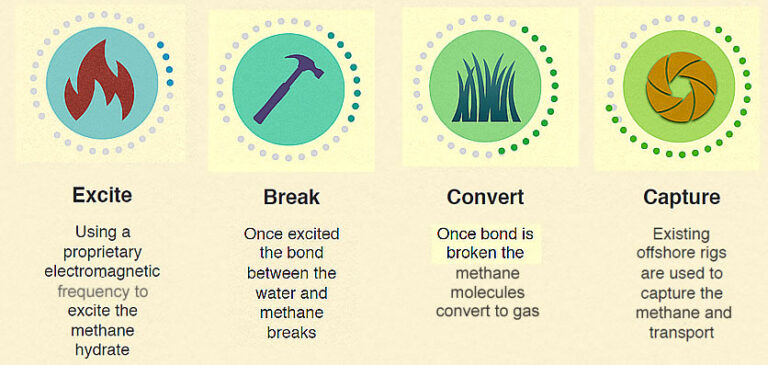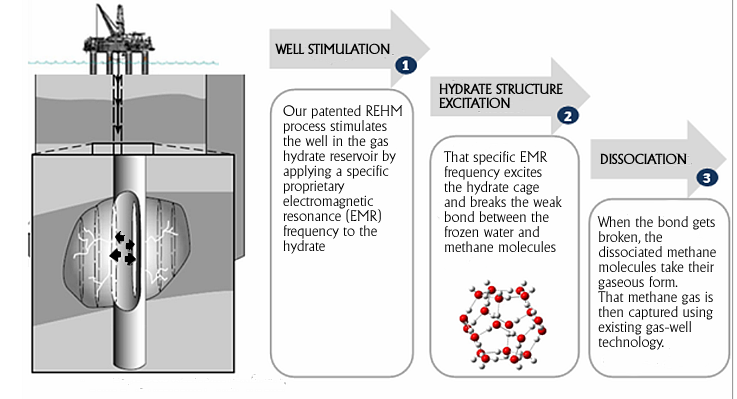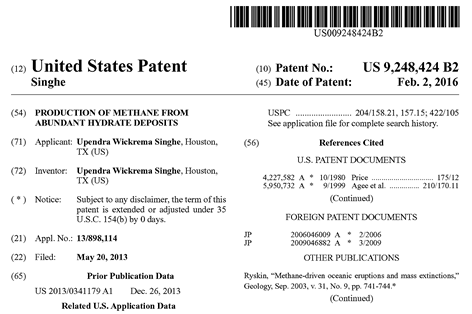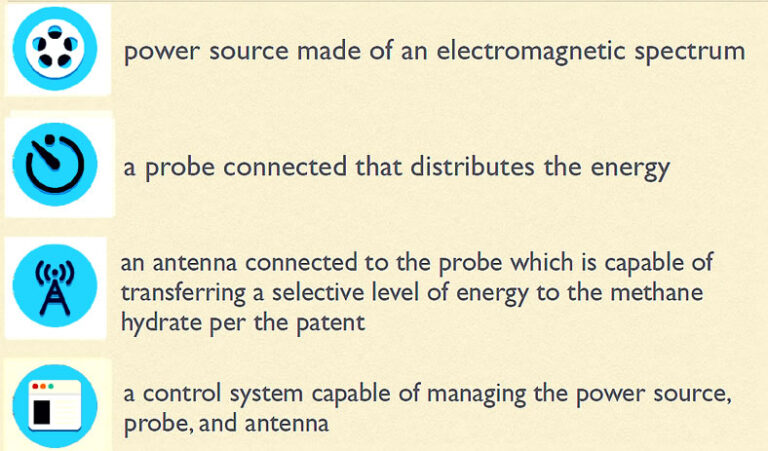
New Technology
Unlike failed methods that use too much energy or are
too costly, our new technology uses low-energy microwaves to melt the icy gas
hydrate structures to release methane at a minimal cost
We have discovered a novel way to produce gaseous methane from deep seabed gas hydrate deposits by using the principle of electromagnetic resonance (EMR). It uses selective energy transfer using electromagnetic radiation to melt the icy gas hydrates to produce methane and water.
Such selective low energy transfer overcomes the limitations of other technologies by producing methane from oceanic gas hydrates economically for commercialization.
Our new technology uses a 4-part process to produce methane from gas hydrates at a very low cost.

Since this new process aims an electromagnetic beam to warm a localized area containing gas hydrate deposits to break the weak water-methane bond for methane extraction, it uses far less energy than all other methods. And since the dissociation of gas hydrate crystals into methane will be at high deep-sea reservoir pressure with low water content, the methane is suitable for pipeline transportation without requiring any costly processing or compression.
The estimated initial cost of production of methane from gas hydrates, using a tie-back to an existing deep-sea gas facility, will be about 60% of the infrastructural and distribution costs of re-gassed LNG. However, as experienced in other parts of the world, this cost will decrease significantly as the gas hydrate industry using our technology matures.
Our patented REHM (Resonance Electromagnetic Hydrate Methane) process melts the icy gas hydrate structures and releases the methane by using specific low-energy EMR.
It covers the well stimulation device that dissociates the icy gas hydrate to gaseous methane and water in three steps.

This innovative new process becomes even more cost-effective because most components, including those necessary for operation in deep water, are of standard design. And the availability of deepwater vessels, equipment for gas extraction, and talent for using REHM technology minimize operating costs.
Our new REHM technology is covered by US patent 9,248,424-B2. It covers:
enclosing the gas hydrate in a caisson,
positioning an electromagnetic-spectrum power source inside the caisson,
delivering electromagnetic radiation to the gas hydrate to dissociate it into methane and water, and
recovering methane from the water.

The patent also covers a device for applying electromagnetic radiation to dissociate the gas hydrate beneath the deep sea-floor into methane and water. It consists of four parts.
- A power source that can deliver selectable points in the electromagnetic spectrum.
- A probe connected to the power source to deliver electromagnetic radiation to dissociate the hydrate.
- An antenna connected to the distal end of the probe to focus a selected beam of energy to a specific target area of the hydrate.
- A control system that manages the power source. probe, and antenna, that is capable of shutting off the power source under predefined conditions for safety.

All technological components of the REHM process were laboratory-tested by University of Connecticut and initial validation done by Texas A&M University.
